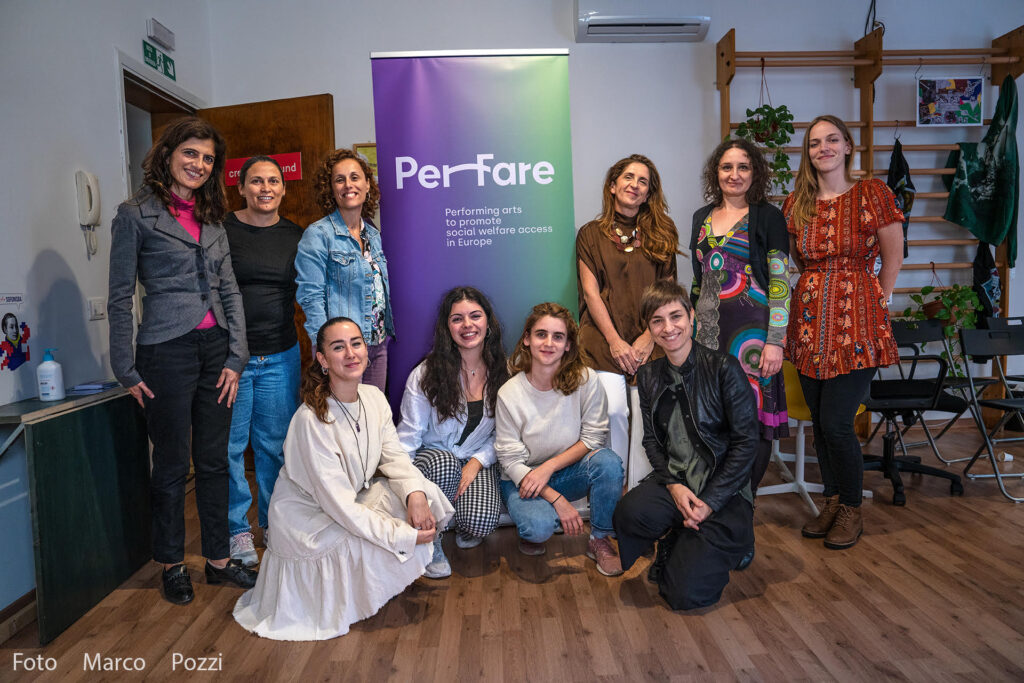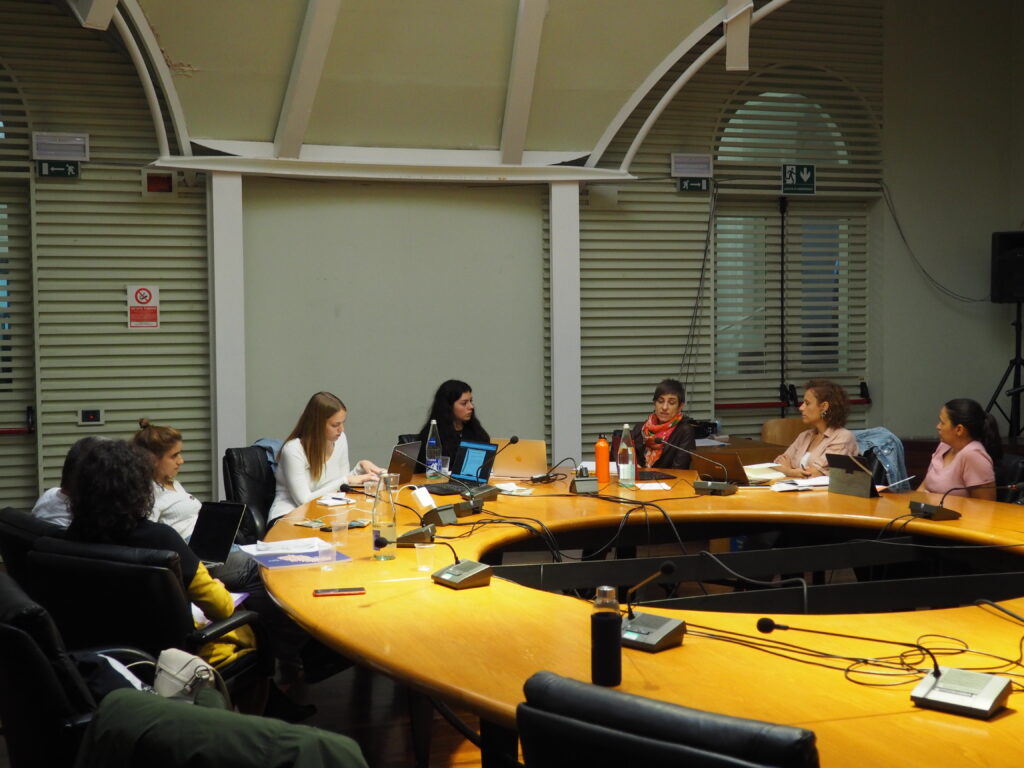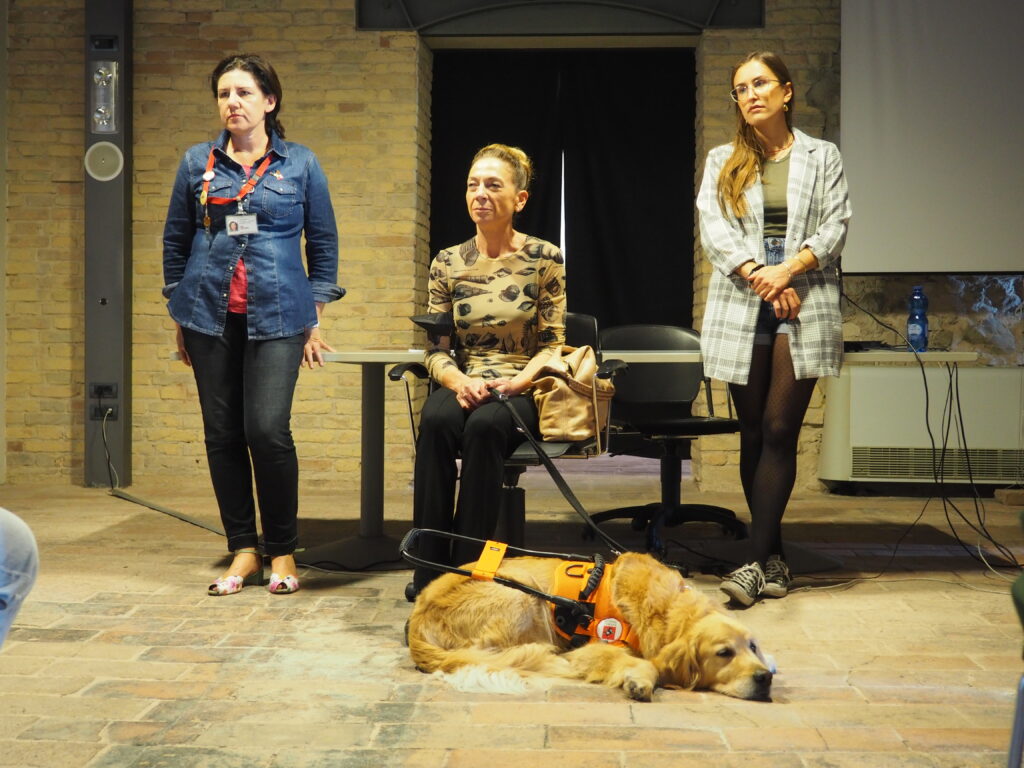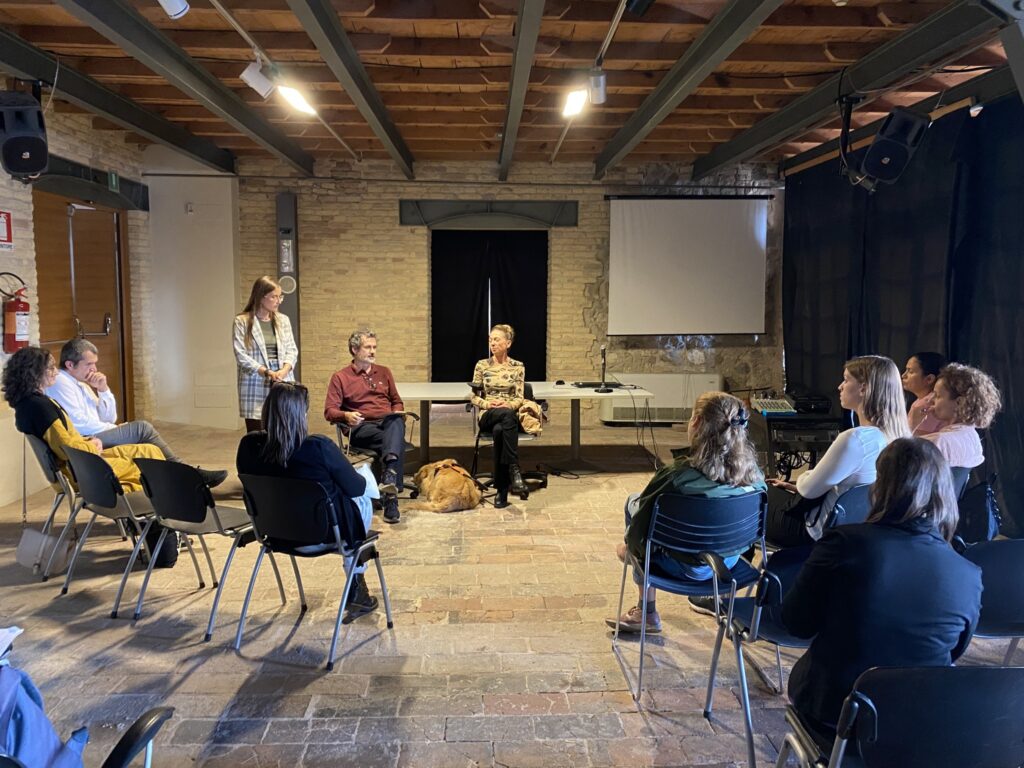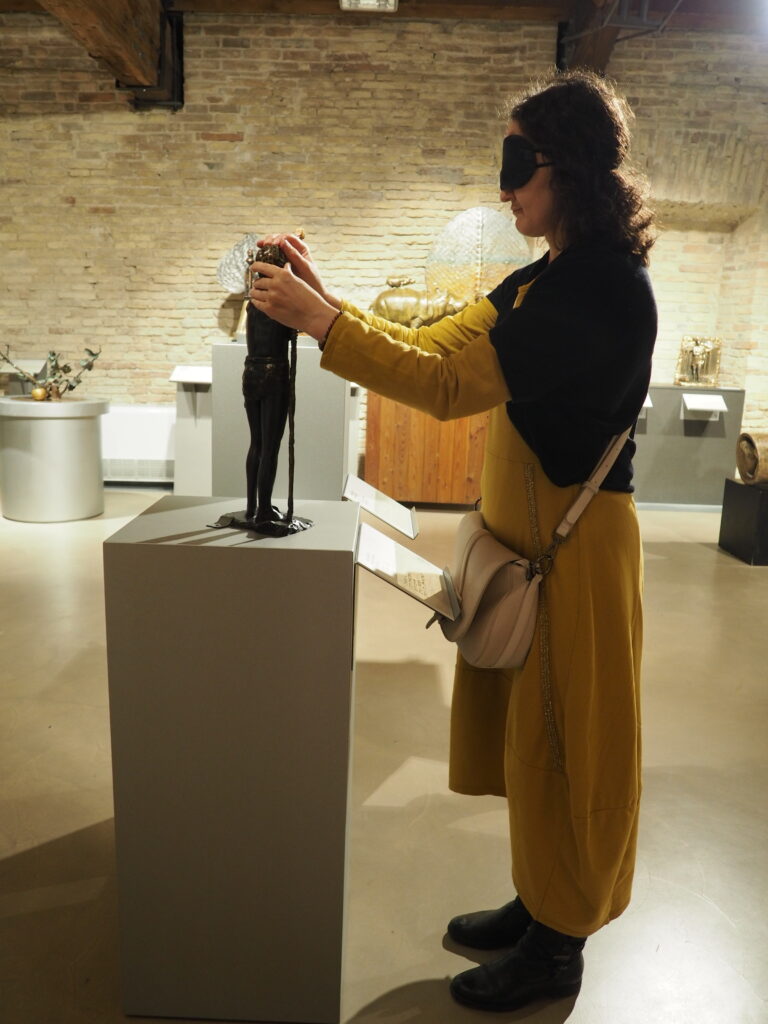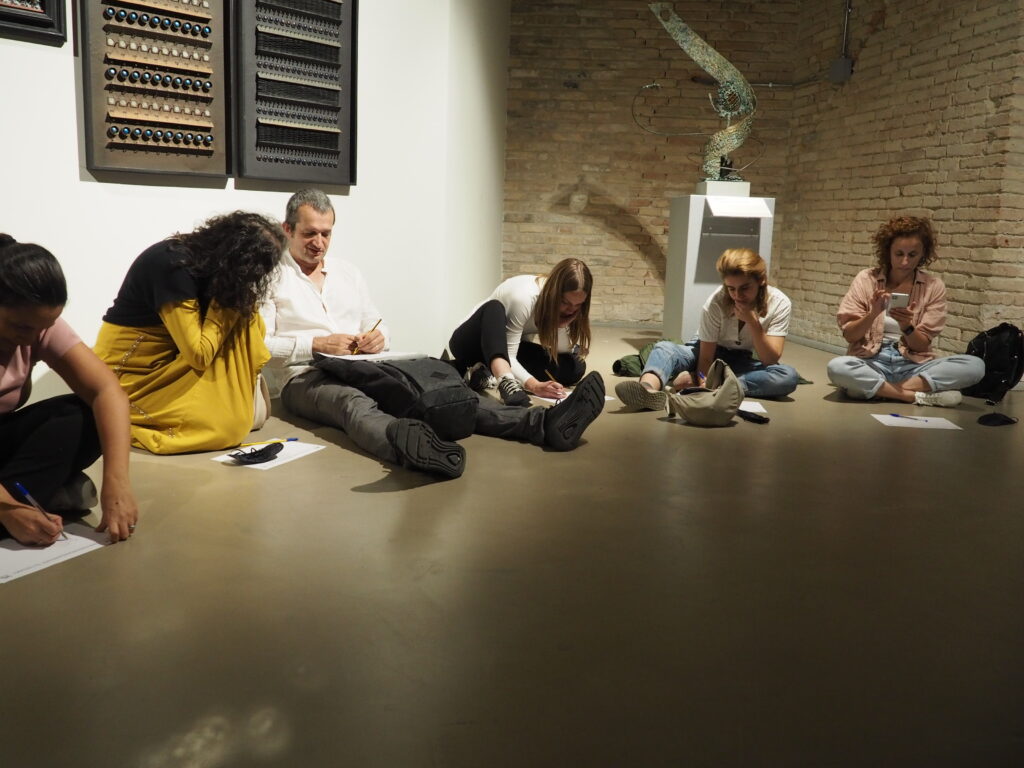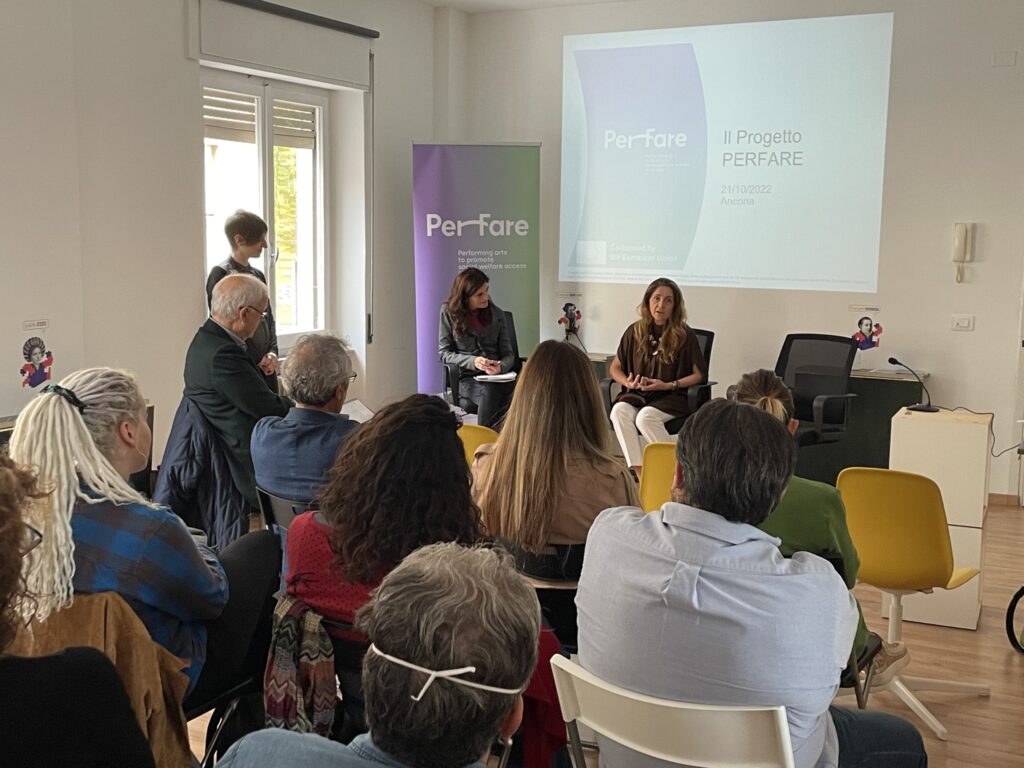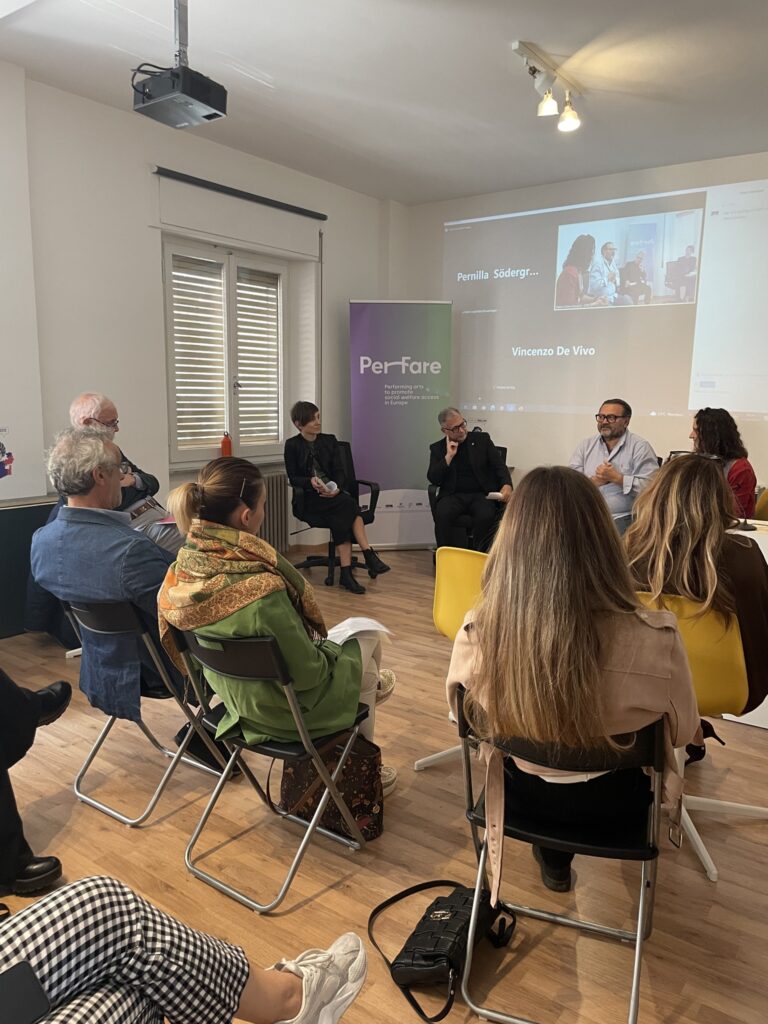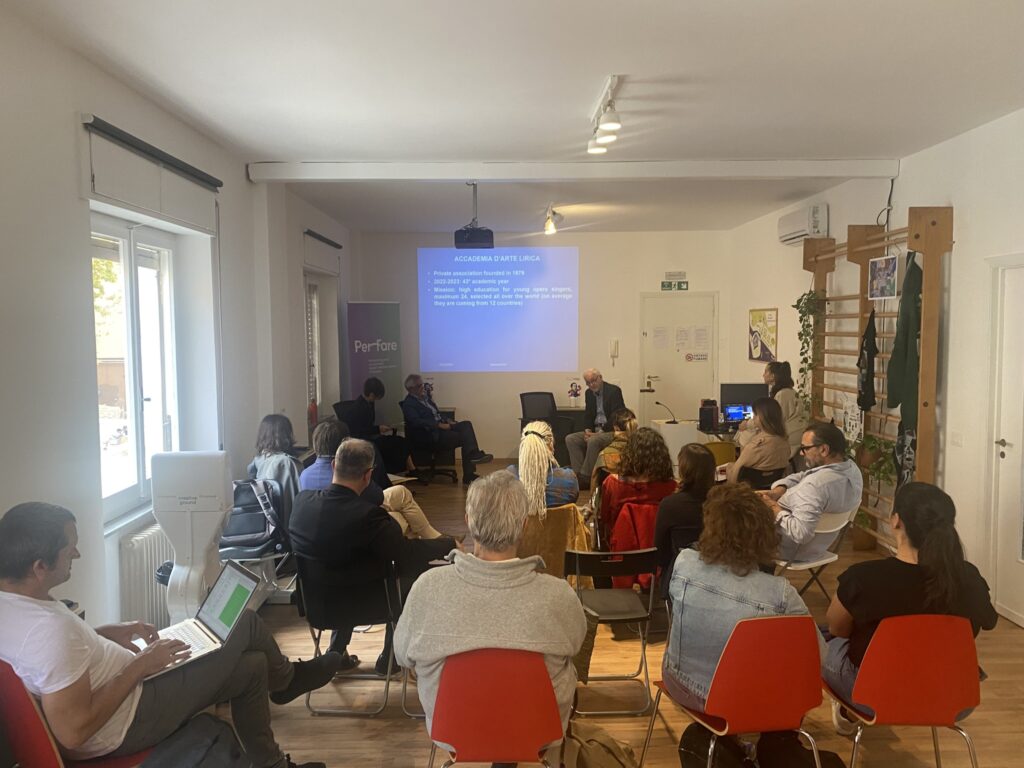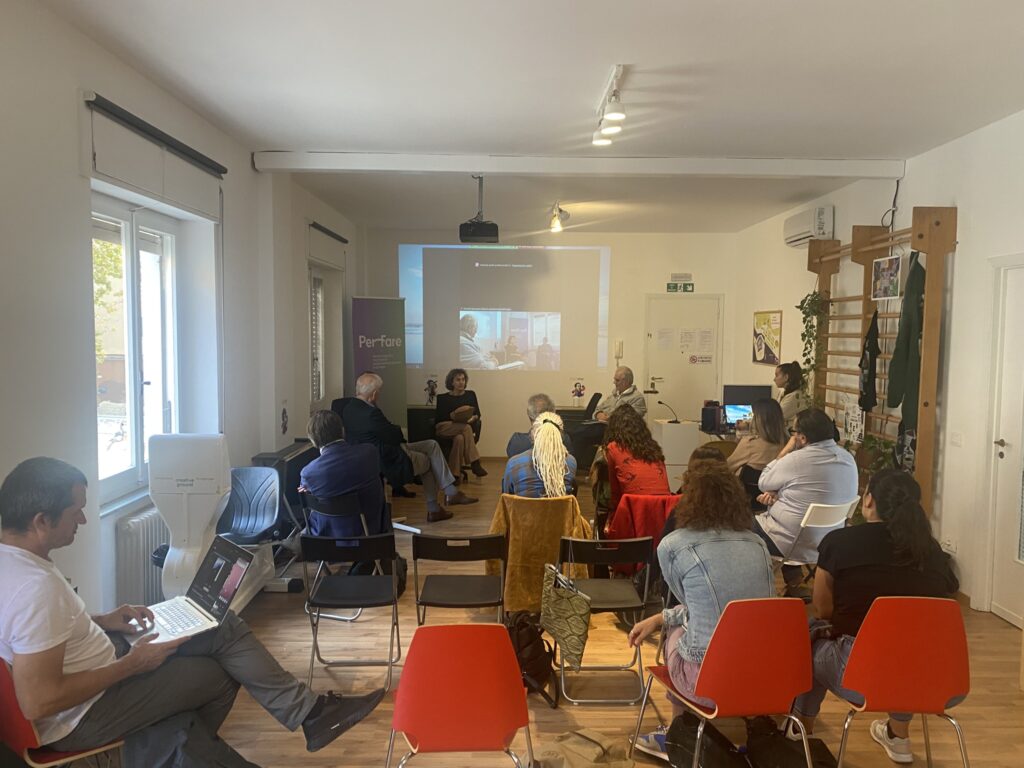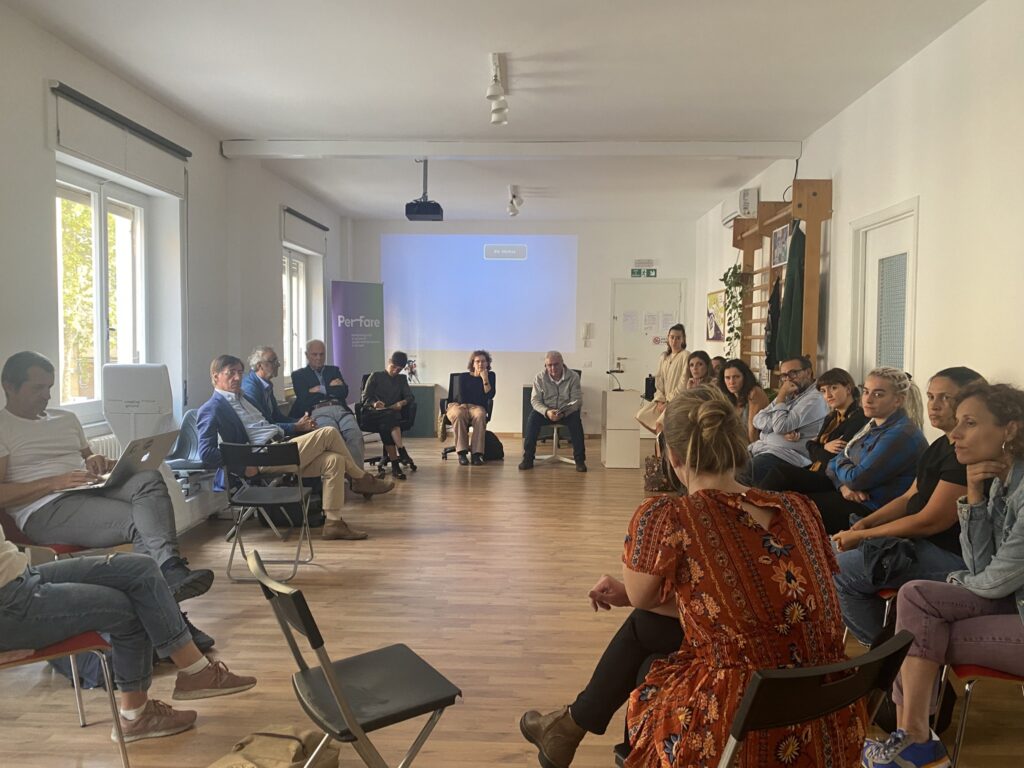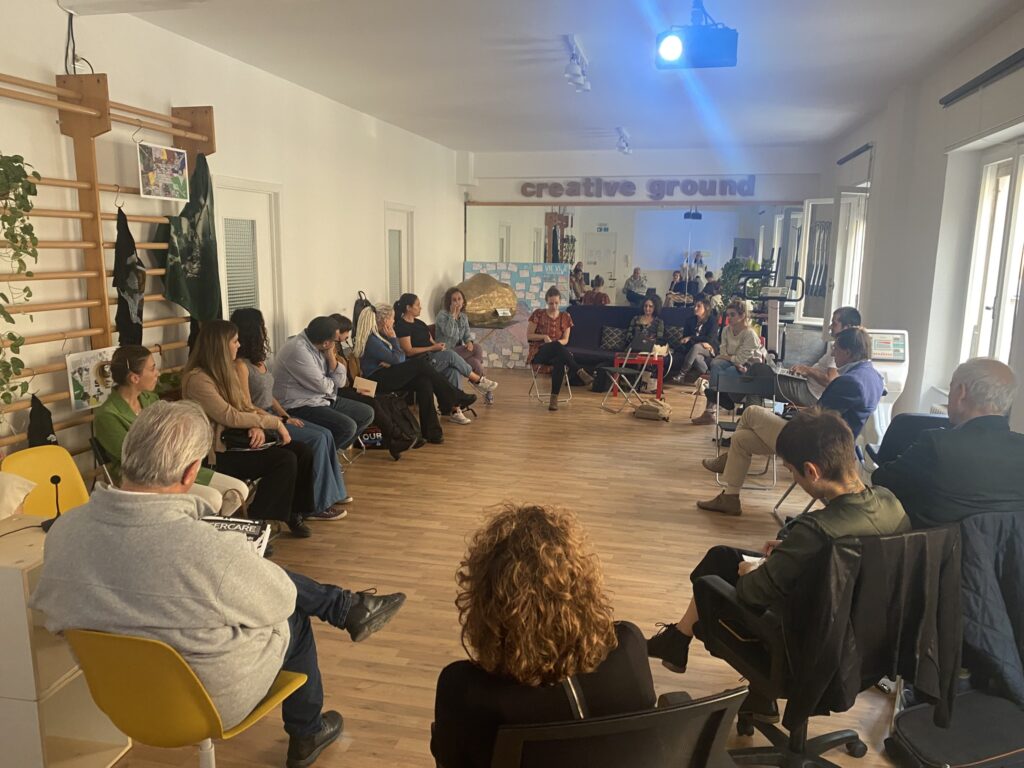What is cultural welfare?
Which cultural welfare practices exist already on a European level?
How do we fill the existing gaps that may prevent its correct implementation in the areas involved by PerFare?
These are the three questions that set the start of our project.
To answer the first, we can use the definition provided by Cultural Welfare Centre:
“Cultural Welfare is an integrated model for the promotion of well-being and health of individuals and communities, through practices based on the visual and performing arts and on cultural heritage.”
Therefore, when we speak about cultural welfare we refer to the capacity of cultural use and participation to be enabling and crucial factors in the promotion of health, in the strengthening of care relationships and in the fight against social inequalities.
Having answered that, the second step is to recognize those practices that are already implementing such approach. In fact, following the project’s objectives, these good practices will be mapped and further capitalized, in order to not just learn from them, but also operate in those gaps where they haven’t yet.
To do so, a peer-to-peer capacity building among Perfare partners is necessary.
And the best way to do so, is to start with field visits of the local realities in the partnering countries.
On 20th and 21st October, the first study visit was hosted by Consorzio Marche Spettacolo in Ancona, Italy.
During these days, PERFARE partners had the occasion to meet face to face for the first time and to start reflecting on the upcoming steps, finding common ground and setting internal deadlines for their duties.
Moreover, it was an occasion to inspire their future collaborations with the welfare sector. The Ancona study visit has, in fact, grouped a few presentations of good local practices and relevant experiences that combine culture and well-being, by the following guest speakers:
- Stefania Terrè, visually-impaired actress and theatre director, vicepresident of Unione Ciechi e Ipovedenti delle Marche (blind and visually-impaired regional union – Marche);
- Paolo Marasca, Councilor for Culture of Ancona, on KUM! Festival
- Riccardo Serenelli, Villa inCanto
- Roberto Paoletti e Stefania Crocetti, La Casa di Asterione
- Piero Alessandrini e Vincenzo de Vivo, Accademia d’Arte Lirica di Osimo
- Massimo Zenobi, Fondazione Franco Moschini (Politeama)
- Isabella Carloni, Rovine Circolari
- Vito Minoia, Teatro Aenigma
The partners also had the chance to visit one of the best cultural welfare examples in Ancona: Museo Omero, National Tactile Museum. Here, they could explore art by using touch instead of eyes, emulating the experience of visually-impaired audiences, to whom the museum is addressed.

